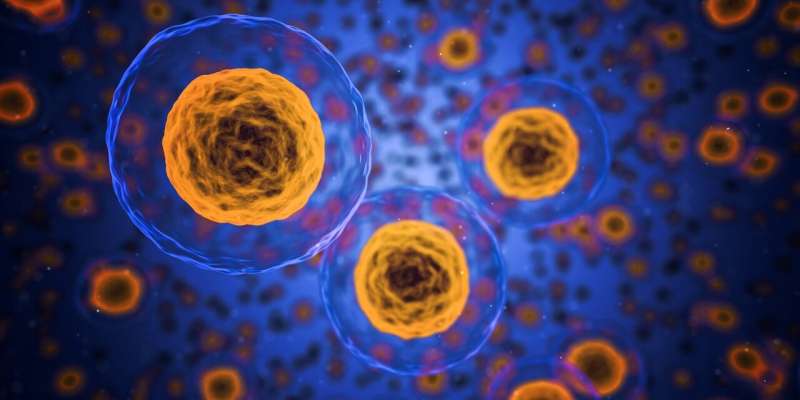Study illuminates molecules aiding communication inside cells

New research from the Lippincott-Schwartz Lab at HHMI's Janelia Research Campus being presented at Cell Bio 2022 provides a close-up look at the individual molecules that facilitate communication between cellular structures. The new research, which is also posted as a preprint on bioRxiv, shows that these molecular tethers are much more dynamic and complex than previously thought, revealing new insights about their role in helping to keep cells alive.
Protein complexes called molecular tethers form at contact sites where organelle membranes touch each other, helping to transfer molecules across these sites and enable communication between organelles.
Scientists knew this interface was important for many biological processes, but it was difficult to image the individual molecules and fully understand what was happening at these contact sites. Many scientists thought these tethers were stable protein complexes that remained at the contact sites.
The new study used 3D electron microscopy and live cell, high-speed single molecule imaging to get a closer look at the molecular tethers between the endoplasmic reticulum and mitochondria in real time.
The researchers found these tethers are in constant motion, remaining at the contact site for only a few seconds before being exchanged with other tethers. The tethers are continuously binding and unbinding organelles together and altering the size and configuration of the contact site in response to changes in the cell.
These constant changes may help explain how cells can react to changes so quickly and suggest these molecular tethers could act as modular communication hubs for coordinating cell physiology.
The new findings show the importance of dynamic cell imaging and could help in understanding some neurodegenerative disorders. The new research suggests a mutation associated with ALS affects a tether's ability to bind and unbind at the contact site, potentially perturbing effective cellular communication.
More information: Christopher J. Obara et al, Motion of single molecular tethers reveals dynamic subdomains at ER-mitochondria contact sites, bioRxiv (2022). DOI: 10.1101/2022.09.03.505525
Provided by Howard Hughes Medical Institute





















